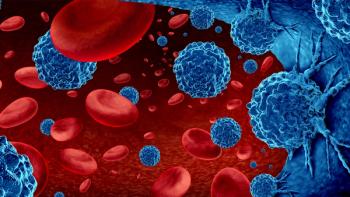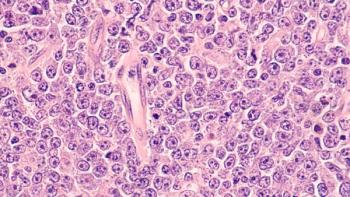
KATE2 Study Misses Endpoint, Appears Promising for HER2+, PD-L1-Expressing Breast Tumors
At the 2019 ESMO Congress, the phase II KATE2 trial missed its primary endpoint but found promising results for a subgroup of patients with HER2-positive breast cancer with a PD-L1 expression.
Treatment with atezolizumab (Tecentriq) plus ado-trastuzumab emtansine (T-DM1; Kadcyla) improved progression-free survival (PFS) in patients with HER2-positive breast cancer whose tumors expressed PD-L1, compared with T-DM1 alone, according to an exploratory analysis of the randomized, phase II KATE2 trial.
At the European Society of Medical Oncology (ESMO) Congress 2019, new results for the trial showed a benefit in overall survival (OS) with the combination regimen compared with T-DM1 alone for patients with HER2-positive breast cancer with a PD-L1 expression. However, the exploratory analysis showed improved PFS in those whose tumors expressed PD-L1 and not for the overall patient population, according to Leisha A. Emens, MD.
In the exploratory analysis of the patient subgroup who had PD-L1 expression in their immune cells, PFS was 8.5 months with atezolizumab/T-DM1 versus 4.1 months with T-DM1 alone (stratified HR, 0.60; 95% CI, 0.32-1.11). Emens, professor of medicine in hematology/oncology, co-leader of the Hillman Cancer Immunology Program, and director of translational immunotherapy for the Women's Cancer Research Center at UPMC Hillman Cancer Center, was one of the lead authors on the KATE2 study and believes the combination of atezolizumab plus T-DM1 suggests greater efficacy together than as single agents.
“It seems to be emerging, at least for atezolizumab, as a way of selecting patients most likely to benefit. We will need further studies, but these results are encouraging,” Emens said in an interview with
The study enrolled HER2-positive patients with locally advanced or metastatic breast cancer who had received prior treatment with a taxane chemotherapy and trastuzumab (Herceptin). Patients were then randomized 2:1 to receive T-DM1 with either atezolizumab or placebo. Patients with PD-L1 expression who experienced increased PFS also saw an improvement in their OS rate from approximately 87% to about 93%.
The combination of atezolizumab and T-DM1 was also well received by patients in the trial. “In the immunotherapy arm, in which patients received T-DM1 plus atezolizumab, there was a higher rate of infusion reactions, which is a common adverse event (AE) of monoclonal antibody infusions. There were also higher rates of thrombocytopenia and transaminitis, which are known AEs of T-DM1,” said Emens. The most common immune-related AEs were rash, hypothyroidism, and pancreatitis, and only 2 cases of rash were greater than grade 3. The immune-related AEs were largely attributed to atezolizumab.
While the KATE2 trial ultimately didn’t meet its endpoint, the results of the exploratory analysis of the PD-L1 positive subgroup showed promise for future studies into the use of combination treatments with atezolizumab to treat patients with HER2-positive breast cancer. This data can also help oncology professionals predict a response to atezolizumab, according to Emens. “It turns out that in breast cancer, there is not a significant level of tumor cell expression above and beyond what you find in immune cells. At least for breast cancer, it appears that immune cell expression is the most important.”
For more on Emens's insight into the KATE2 study, watch her interview
Newsletter
Knowledge is power. Don’t miss the most recent breakthroughs in cancer care.

















































































